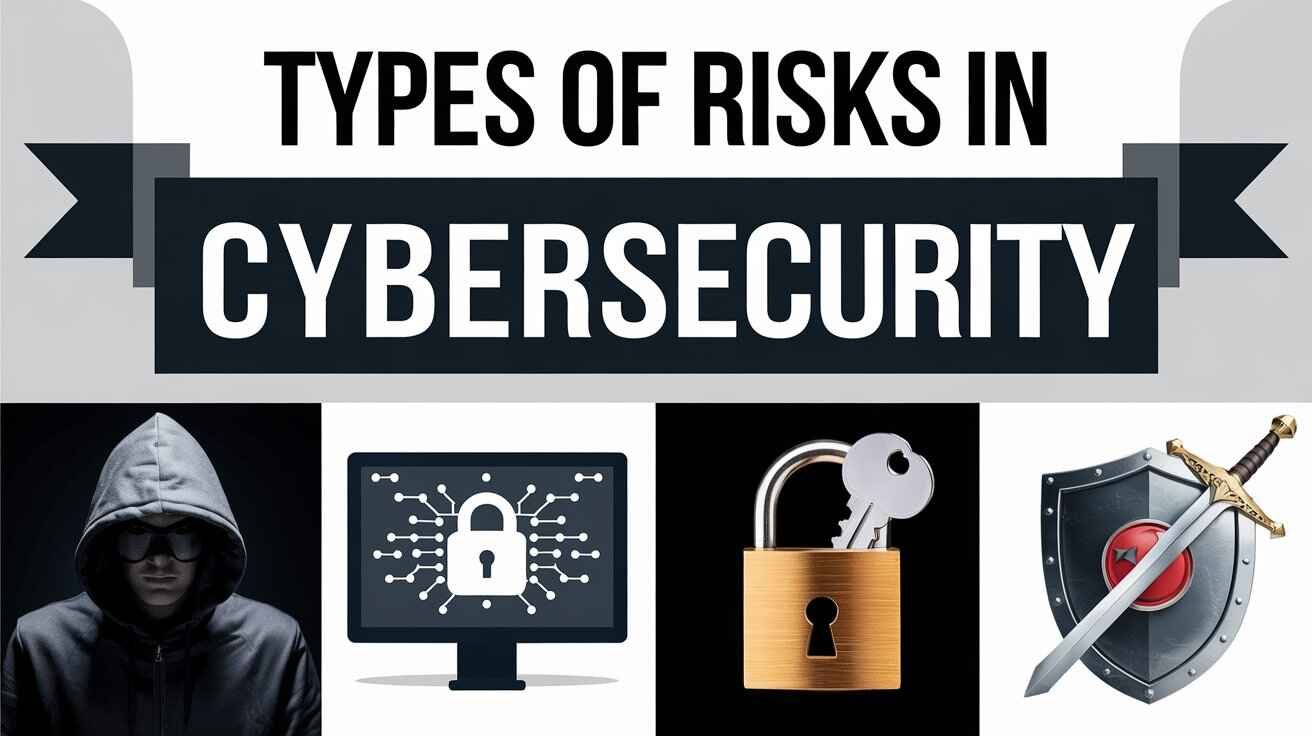In the virtual age, in which generation permeates every element of commercial enterprise operations, cybersecurity has emerged as a critical situation for businesses worldwide. Cyber threats are growing in frequency and sophistication, making it vital for organizations to implement sturdy cybersecurity measures. Among the critical techniques in cybersecurity threat management are danger popularity and hazard switches. This comprehensive guide delves deeply into these techniques, exploring various cyber dangers, their economic implications, and powerful manipulation approaches.
Introduction to Cybersecurity Risk Management
Cybersecurity chance management is an essential method that involves identifying, assessing, and mitigating dangers related to cyber threats. This ongoing undertaking is vital for companies to protect their property, records, and popularity. According to Cybersecurity Ventures, international cybercrime damages are projected to surpass $10.5 trillion annually by 2025. This amazing parent underscores the need for corporations to undertake strategic danger management frameworks that incorporate both hazard acceptance and risk switch, ensuring they are equipped to deal with capability threats effectively.
The Significance of Cybersecurity in Business
In today’s hyper-linked surroundings, cybersecurity isn’t always merely an IT concern; it’s a crucial part of the average business approach. A successful cyber attack can lead to significant financial losses, a lack of patron trust, and intense felony ramifications. The repercussions of a data breach extend beyond instant economic losses, impacting long-term patron relationships and logo reputation.
- Financial Impact: A 2023 document by IBM discovered that the average total fee of a data breach exceeds $4.45 million. This includes direct charges, forensic investigations, notification charges, and oblique costs like misplaced enterprise and reputational damage. Moreover, the expected time to discover and include a breach is said to be 287 days, which highlights the urgency and importance of timely risk management.
- Reputation Risks: In the competitive marketplace, preserving client acceptance as accurate is paramount. A single records breach can significantly tarnish an organization’s recognition, which is central to customer attrition and reduced revenue. As customer cognizance of cybersecurity threats increases, companies that fail to guard sensitive records are the most effective at dropping current and capable future customers.
Overview of Cybersecurity Risks
A sturdy understanding of various cybersecurity risks is essential for robust change control. Here are some of the most time-honored dangers that groups face nowadays:

Phishing Attacks
Phishing attacks are deceitful attempts to gain sensitive facts, including usernames, passwords, and credit score card details, by masquerading as a truthful entity in digital communications. These assaults often come in the form of emails or messages that seem legitimate but are designed to trick the recipient into revealing private facts.
- Financial Consequences: According to a Cisco record, organizations can incur costs starting from $15,000 to $1.6 million because of records loss and recovery efforts following a phishing assault. Additionally, those attacks can cause reputational harm, as customers may feel that their records aren’t secure with the enterprise.
Ransomware and Malware
Ransomware attacks contain malicious software that encrypts files in the sufferer’s system, rendering them inaccessible until the attacker pays a ransom. On the other hand, malware encompasses a broad range of malicious software that can thieve, encrypt, or delete records, disrupt device performance, or maybe secret agents on users.
- Statistics: Cybersecurity Ventures predicts ransomware damages will amount to $265 billion in 2031. The monetary impact of such attacks may be devastating, as corporations no longer face ransom needs but also the prices associated with data restoration and commercial enterprise interruption.
Insider Threats
Insider threats arise from personnel, contractors, or business companions who misuse their access to sensitive records. These threats can be intentional, in which an insider compromises information security, and unintended, in which an insider makes a mistake that exposes the employer to risk.
- Financial Impact: According to the Ponemon Institute’s 2023 record, insider threats can cost companies an average of $11.45 million yearly. This figure includes fees related to misplaced productivity, recuperation efforts, and the impact on client consideration.
Explore more Tech News and Gaming updates on our TimesFlicker.
Distributed Denial of Service (DDoS) Attacks
DDoS assaults crush a community or website with immoderate visitors, rendering services unavailable to legitimate customers. Attackers often use botnets—collections of compromised computers—to generate the traffic required to disrupt services.
- Economic Damage: The downtime cost from DDoS attacks can be $300,000 per hour, which aligns with Kaspersky. This figure highlights the crucial significance of deploying robust countermeasures to mitigate the effect of such assaults.
Data Breaches
Data breaches occur when unauthorized people gain access to sensitive statistics, private data, financial information, or intellectual property. These incidents can lead to sizable financial losses and reputational harm.
- Key Figures: The IBM report states that the healthcare enterprise experiences the highest fees associated with data breaches, averaging $10—ninety-three million per incident. As data breaches become more frequent, organizations must prioritize security measures to protect against those devastating occasions.
Understanding Risk Acceptance
Risk reputation is an approach that entails acknowledging the life of a hazard and deciding no longer to take any particular actions to mitigate it. This method is frequently applied to low-impact or low-possibility dangers, wherein the value of mitigation is higher than the ability loss.
Criteria for Risk Acceptance
Organizations can also recall chance recognition below the following circumstances:
- Cost-Benefit Analysis: When the costs of imposing controls or mitigation strategies exceed the expected losses from the chance, recognition can be the most financially sound choice. For example, suppose a danger has a minimal likelihood of happening and might cause a minor loss. In that case, an organization may accept that chance rather than spend money on high-priced countermeasures.
- Low Probability: If a corporation assesses a hazard as having a low possibility of incidence, it could accept the risk rather than devote resources to mitigation efforts. For instance, an agency may take the risk of a particular software vulnerability if it knows the chance of exploitation is meager.
Financial Implications of Risk Acceptance
While accepting risks may also save money in the short term, agencies must cautiously evaluate capacity long-term prices if a risk materializes. It is critical to perform regular checks and preserve a vigilant approach to ensure that common risks continue to be possible as the enterprise panorama and hazard environment evolve.
For instance, an employer may encounter a minor software vulnerability; however, it’s essential to screen it continuously. If it becomes evident that the hazard level has multiplied—perhaps because new vulnerabilities are observed or changes in the hazard panorama—the agency must be organized to modify its strategy.
Understanding Risk Transfer
Risk transfer involves shifting the burden of risk to another party, generally via coverage. This approach can offer a safety net for organizations with high-impact dangers that could cause significant financial losses.
The Role of Cyber Insurance
Cyber insurance has emerged as a vital factor in many companies’ risk management strategies. It is designed to cover numerous cybersecurity incidents, including records breaches, ransomware attacks, and business interruptions.
- Types of Coverage: Cyber coverage rules commonly provide the number one kind of insurance:
- First-Party Coverage: This type reimburses the insured enterprise for direct costs incurred by a cyber incident, including data recovery, device maintenance, and notification expenses to affected customers.
- Third-Party Coverage: This type of insurance protects the agency from liabilities incurred by information breaches affecting clients, including felony expenses, settlements, and regulatory fines.
Costs and Benefits of Cyber Insurance
- Premiums: The value of cyber insurance varies extensively, depending on factors such as the organization’s size, the industry it operates in, and its unique hazard exposure. Small agencies may also pay between $500 and $5,000 annually for coverage, while larger companies may face considerably higher rates based entirely on their hazard profiles.
- Deductibles: Many regulations include deductibles ranging from $5,000 to $100,000 or greater, depending on the coverage terms. Organizations should be prepared to pay those fees before their insurance kicks in.
- Benefits: Cyber insurance provides valuable economic protection and assistance during a cyber incident. It can provide access to incident response experts, legal suggestions, and disaster management sources, assisting corporations in more effectively navigating the aftermath of a cyber assault.

Balancing Risk Acceptance and Risk Transfer
A proper balance between hazard popularity and threat switch is essential for an effective cybersecurity strategy. Organizations should verify their threat urge for food—the amount and sort of chance they’re willing to accept—to decide the best technique for distinctive dangers.
- Strategic Integration: A well-rounded danger control method integrates attractiveness and transfer, ensuring that corporations are organized for diverse capacity situations. For instance, an agency may select to accept low-stage phishing dangers while investing in cyber insurance to protect against more extensive threats, such as ransomware assaults.
- Regular Assessment: Continuous monitoring and assessment of risks are essential to preserving robust stability. As new threats emerge and the agency evolves, it may need to regulate its chance management method, thus transitioning from popularity to switch or vice versa.
Implementing an Effective Cybersecurity Risk Management Strategy
To put into effect a strong cybersecurity change management strategy that successfully contains risk reputation and danger switch, groups must recollect the following steps:
- Conduct a Comprehensive Risk Assessment: Identify capability cyber risks and investigate their chance and capacity effect. This will help determine which risks can be prevalent and which need to be transferred.
- Establish Clear Risk Tolerance Levels: Define the corporation’s risk appetite, specifying the forms of risks that can be customary and those that require switching through insurance or a different method.
- Implement Robust Cybersecurity Controls: To mitigate dangers successfully, employ a layered cybersecurity method that consists of technical, administrative, and physical controls. This can include firewalls, intrusion detection structures, worker training, and everyday software updates.
- Review and Update Insurance Policies Regularly: As the risk landscape evolves, businesses must assess their cyber coverage rules to ensure safety against rising dangers. Regularly updating insurance can offer a safety net against new cyber threats.
- Educate and Train Employees: Implement ongoing education applications to ensure personnel know cybersecurity risks and comprehend their role in defending the corporation. A well-informed workforce minimizes insider threats and decreases the probability of successful phishing attacks.
- Develop Incident Response Plans: Establish clean incident response plans defining cyber incident response processes. These plans should encompass conversation strategies, duties, and steps for containing and mitigating damages.
Conclusion
In conclusion, cybersecurity danger management is essential to any enterprise’s typical business method. By efficiently balancing threat attractiveness and chance transfer, groups can navigate the complicated landscape of cyber threats even as they defend their belongings and recognition. Regular checks, sturdy controls, and a proactive incident response method are critical components of an a-hit cybersecurity approach.
As businesses continue to include digital transformation, cybersecurity’s significance will grow. Organizations can construct a resilient framework capable of withstanding evolving cyber threats by prioritizing hazard management strategies that align with organizational goals.
FAQs
What is cybersecurity chance control?
Cybersecurity risk management is identifying, assessing, and mitigating dangers associated with cyber threats to defend an organization’s assets, records, and reputation.
What is dangerous acceptance in cybersecurity?
Risk attractiveness is a strategy that entails acknowledging a particular danger and deciding not to take any precise moves to mitigate it. It is commonly implemented for low-effect or low-chance dangers.
How does threat transfer work?
Risk transfer involves moving the burden of danger to every other party, generally via insurance, providing a safety net for groups in opposition to high-impact cyber threats.
What is the importance of cyber coverage?
Cyber coverage plays a vital role in an agency’s threat management method by providing monetary protection and support during cyber incidents and masking various expenses associated with data breaches and other cyber threats.
How can agencies balance danger recognition and threat switch?
Organizations can stabilize hazard attractiveness and danger switch by assessing their chance urge for food, continuously monitoring dangers, and adjusting their techniques to ensure safety towards cyber threats.
Also Read: Gama G25 Bluetooth Headphones Review: Great Sound and Comfort!





